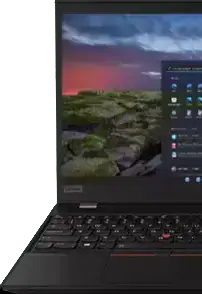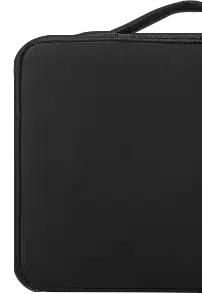What is DIR?
Directory (DIR) is a fundamental command in computing, vital for navigating and managing files. It acts as a virtual roadmap, listing files and directories, aiding in efficient file organization and troubleshooting. With various options like sorting, filtering, and wildcard usage, DIR empowers users to tailor their file exploration experience. Whether you're a programmer, tech enthusiast, or everyday computer user, understanding DIR is key to effective file management on your system.
How do I navigate through DIR in the command line?
In the command line, you can use simple commands. "DIR" lists all files and directories in the current location. " compact disc (CD)" followed by a directory name lets you change to that directory. "DIR /S" shows everything in the current directory and its subdirectories.
Can I customize the way DIR displays information?
Absolutely, you can add parameters to tailor DIR to your needs. "DIR /W" displays the information in a wide format, making it easier to read. "DIR /P" pauses after each screen, which is handy if you have a lot to go through.
What's the purpose of the "DIR /A" command?
The "/A" switch in DIR allows you to display files with specified attributes. For example, "DIR /A:H" shows hidden files. This helps you filter the information and focus on what you're specifically looking for.
How does DIR help in managing files?
DIR streamlines file management, acting as a virtual navigator in computing. With commands like "DIR /B" for barebones lists and "DIR /S" for recursive searches, it efficiently organizes, filters, and manipulates files. Customizable parameters, such as sorting options and wildcard characters, enhance precision. Whether scripting tasks, troubleshooting, or creating file inventories, DIR is a versatile tool, empowering users to effortlessly navigate and control their file systems for optimal efficiency.
Can DIR be used to search for files?
DIR is a powerful command for searching files in a directory. By using the "DIR" command with the "/S" switch, you can initiate a recursive search, scanning not only the current directory but also its subdirectories. This efficient feature helps you quickly locate specific files or types of files within your system, streamlining the search process and enhancing your overall file management experience.
What is the purpose of the wildcard character () with DIR?
The wildcard character () is a game-changer with DIR. For instance, "DIR *.txt" displays all text files in the current directory. It's a powerful tool for refining your search and quickly narrowing down your focus.
How can I sort the DIR output?
To efficiently sort DIR output, use the "/O" switch followed by a sorting parameter. For instance, "DIR /ON" arranges files by name, "DIR /OE" by extension, and "DIR /OS" by size. Experiment with these options to tailor the display to your preferences. This flexibility enhances your ability to quickly locate and organize files in a way that suits your workflow.
Does DIR have any options for displaying additional details about files?
Yes, DIR offers options to display additional details about files. Use "DIR /Q" to show file ownership information and "DIR /T" for file timestamps. These details enhance your understanding of files, helping you make informed decisions about them. Incorporating these options into your commands provides a more comprehensive view of your file system, aiding in efficient file management and organization.
What is the purpose of the "DIR /L" command?
The "DIR /L" command serves to display file and directory names in lowercase, enhancing uniformity in your command line output. This feature is particularly useful for creating consistent scripts and commands, where case sensitivity matters. By presenting file names in lowercase, it ensures a standardized and case-insensitive view of your directory contents, promoting clarity and ease of interaction within the command line environment. This can be beneficial for scripting tasks, file manipulation, and maintaining a coherent coding environment.
How can I redirect the output of DIR to a file?
To redirect the output of DIR to a file, use the ">" symbol. For example, type "DIR > FileList.txt" in the command prompt. This command creates a text file, FileList.txt, containing the list of files and directories in the current location. Efficient for saving and reviewing information, it's a handy technique in command-line navigation and file management. Boost your productivity by mastering this simple yet powerful command.
What is the use of the "DIR /?" command?
The "/?" switch is like the help desk for DIR. Typing "DIR /?" provides a list of available options and commands, along with brief explanations. It's your go-to guide when you need a quick reference while working with DIR.
Can I use DIR to check disk space?
Absolutely, "DIR /S /A:-D" followed by the drive letter gives you the total size of all files on that drive. This is a quick way to get an overview of how much space your files are occupying.
How does DIR contribute to batch scripting?
DIR is a scripting superhero; you can use it in batch scripts to automate tasks. For example, combining "DIR /B" with other commands lets you perform actions on specific files, streamlining repetitive tasks and saving you valuable time.
In what scenarios would I find the recursive search capability of DIR useful?
Imagine you have a large project with multiple nested folders, each containing important files. Instead of manually searching through each folder, you can use "DIR /S" to recursively search through all subdirectories, making it a lifesaver for efficient file management.
Can I use DIR to filter files based on their size?
Absolutely, the "/S" switch combined with the "/O-S" switch sorts files by size in descending order, helping you quickly identify and manage large files. This is particularly useful when you need to free up disk space or identify space-consuming files.
How does DIR contribute to troubleshooting?
DIR can be a valuable troubleshooting tool. By using commands like "DIR /A:-H," you can reveal hidden files that might be causing issues. It helps you uncover elements that might not be visible through regular file explorers, providing a more comprehensive view of your system.
Can I use DIR to create a list of all files in a directory and its subdirectories?
Absolutely, "DIR /S /B" generates a comprehensive list of all files in the current directory and its subdirectories. This list can be saved for future reference or used as input for other commands or scripts.
What's the significance of the "DIR /P" command?
The "/P" switch in DIR pauses after each screen, allowing you to review information at your own pace. This is especially helpful when dealing with extensive directory listings, preventing crucial details from flashing by too quickly.
















